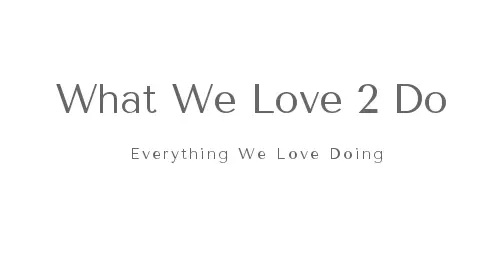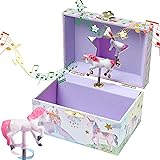As global citizens, many of us traverse international borders, passport in hand. Those little booklets, with their stamps and stickers, are like postcards from our worldly adventures. But have you ever wondered, “What is the yellow sticker in my passport?”
The truth is, passports and their paraphernalia often elicit intrigue and speculation. From the stamps representing our globetrotting journeys, to the array of stickers with their cryptic codes, they’re an enigmatic puzzle waiting to be decoded. One such element is the infamous yellow sticker. What is it? What does it signify? Let’s unravel this mystery.
Table of Contents
The Yellow Sticker: Decoding the Enigma
Typically, the yellow sticker in your passport is a security measure implemented by airport security and immigration officials. This adhesive tag, generally bearing cryptic alphanumeric codes, is a procedural requirement. It’s an essential part of ensuring safe and secure travel, acting as an operational tool to track the movement of passengers and their passports.
However, these stickers are not just any old stickers; they contain vital information used by airline staff and immigration officers. They note down your travel details, including your flight number, destination, and travel date. It’s like your passport’s secret language, communicating with authorities and ensuring your journey runs smoothly.
Significance of Colors: Yellow, Red, and Orange
You’ve probably noticed that not all stickers on passports or boarding passes are yellow. Sometimes, they’re red or orange, and you might be wondering what differentiates these colors.
The red sticker often denotes a passenger who may require special attention or one who has missed a previous flight. It’s a signal to the airline staff to handle these situations with extra care.
The orange sticker on a boarding pass, on the other hand, usually signifies a ‘Selectee’. It means the passenger is selected for additional security screening. This selection could be random or due to specific factors that might have raised a flag.
Dealing with Sticker Residue
Stickers may occasionally leave a residue when removed. Here’s a simple solution: gently rub the area with a rubber eraser or a piece of cloth soaked in a mild solvent like rubbing alcohol. However, be cautious and try not to damage the passport’s integrity. If residue persists, consider professional help to prevent accidental damage.
Unveiling the Hidden Information
When an immigration officer scans your passport, a wealth of information unravels before them. They see your photograph, personal details, visa status, and, crucially, any flags or alerts associated with your passport. A passport scan helps officers ensure there are no security concerns or issues preventing you from entering their country.
Flagged Passport: What does it Mean?
A flagged passport could indicate several things, such as a lost or stolen passport or a person with a similar name on a watch list. However, rest assured, having a sticker does not automatically mean your passport is flagged. A flagged status would typically be communicated to you by authorities.
The Delta Security Sticker: A Special Case
Ever noticed a Delta security sticker on your passport? These stickers are used by Delta Airlines to confirm that passengers have passed the necessary security checks and have been cleared to travel. It’s their way of streamlining operations and ensuring a smooth travel experience.
So, the next time you gaze at that little yellow sticker in your passport, remember, it’s more than just an accessory. It’s a powerful tool, a key part of the intricate puzzle that is international travel.
Read More: About How Acupuncture Can Help Conquer Fear Of Flying?
Unraveling More Passport Mysteries
Now that we’ve explored the yellow sticker’s role and purpose, you might be left wondering about other facets of your passport. What other stories does it tell? What other secrets does it hold?
The Stamps Tell a Story
Each stamp in your passport is a visual testimony of your travels. It records the date and place of your entry and often your exit from a country. Just like stickers, stamps carry a symbolic language of their own.
Sometimes, stamps can even spark diplomatic tensions, like when an Israeli stamp prevents entry into certain countries. They’re not just ink; they’re a part of global geopolitics.
Biometric Passports: The Future is Here
Biometric passports, also known as e-passports, take the security aspect of passports to the next level. These passports contain a microchip embedded in the passport page. This chip holds the same information visually displayed on the data page of the passport, along with a biometric identifier, digital signature, and other biometric data. These technological advances make our passports more secure and harder to forge.
Taking Care of Your Passport
While we’re fascinated by what’s inside our passports, let’s not forget their physical care. A passport is not just another document; it’s your key to the world. Keep it clean, dry, and safe. Ensure it’s always in good condition, as a damaged passport could cause a lot of travel trouble.
Remember, stickers, stamps, or any marking should never obstruct your personal data. If you have stickers that are not related to travel, it’s best to remove them gently to avoid unnecessary queries or issues at immigration checks.
As we demystify these aspects of our passports, we can appreciate them not just as travel documents, but as an essential part of our global identity. They’re tiny booklets of power that grant us access to explore the vast world around us.
To answer a common question, “What is the yellow sticker in my passport?”, we’ve embarked on a journey to explore the hidden world of passports. The more we delve into it, the more fascinating it becomes. From stickers and stamps to biometric data, our passports are a testament to our unique journey through life. So here’s to more stamps, more stickers, and more adventures that take us across borders and into the heart of our shared human experience.
Read More: About Can Hotels Change Rates After Booking? An In-Depth Look
Passports: The Keeper of International Tales
As we delve deeper into the intriguing world of passports, let’s consider their evolution and significance in the grand narrative of human civilization.
The Evolution of Passports
The concept of a passport isn’t a modern invention. Historically, various forms of passports have been in use since antiquity. They took the form of a letter or document issued by a government or a powerful official, requesting that the holder be allowed to pass freely and safely.
In the modern era, the passport as we know it took shape after World War I, when the League of Nations, precursor to the United Nations, began standardizing passports. Today, the humble passport has become an essential element of our interconnected globe.
Passports and Personal Identity
Your passport is an affirmation of your identity. It bears your photograph, your name, your date of birth, and other pertinent details that validate who you are. It speaks not just to border officials, but also to anyone who needs proof of your identity.
A passport also reflects your nationality, embodying your connection to a particular nation. In a sense, it’s your formal introduction to the world, a testament of who you are and where you come from.
The Power of Passports
Passports do more than just prove your identity; they carry a certain power. The ability of passports to grant access to foreign lands is ranked annually in the Passport Index. This ranking depends on the number of countries a passport holder can enter without needing a visa or with visa-on-arrival.
It’s intriguing how the color of the passport cover, the design, the number of pages, the security measures, and the stickers inside carry various meanings. They narrate the tales of your travel, of security protocols, of the changing face of technology, and of the geopolitics of our world.
The yellow sticker, the topic we began our journey with, is just one small piece of the larger puzzle. It’s a cog in the intricate machinery that operates international travel.
A Window into a Globalized World
In essence, passports are a physical symbol of a globalized world. They are a testament to our collective agreement to certain protocols and systems that facilitate international travel.
When we ask, “What is the yellow sticker in my passport?”, we’re not just seeking to understand an aspect of our travel document. We’re opening a door to the fascinating world of international diplomacy, security, identity, and travel.
As the yellow sticker in your passport guides you through international terminals, remember it’s a small but significant part of a greater narrative – a tale of how humanity has worked together to make the world a smaller, more connected place.
So, the next time you see that yellow sticker, think about the story it tells. It’s a story of people, of places, and most importantly, it’s a story of you.
Frequently Asked Questions (FAQs)
You usually won’t know until you try to travel and encounter problems. If your passport has been flagged, immigration officials may detain you for further questioning. If you’re concerned, you can contact your local passport agency or consulate for assistance.
Delta Airlines uses security stickers as an operational tool to ensure passengers have passed the necessary security checks and are cleared for travel. It’s part of their procedure to streamline the passenger handling process.
The orange sticker on your boarding pass typically signifies that you’ve been selected for additional security screening. This could be a random selection or due to specific factors that might have raised a flag.
Gently rub the area with a rubber eraser or a piece of cloth soaked in a mild solvent like rubbing alcohol. Be careful not to damage the passport. If residue persists, consider professional help.
Customs officers see your photograph, personal details, visa status, and any flags or alerts associated with your passport. This information helps them ensure there are no security concerns or issues preventing you from entering their country.
A red sticker on a passport often denotes a passenger who may require special attention or one who has missed a previous flight. It alerts airline staff to handle these situations with additional care.
Wrapping Things Up
To conclude, stickers on your passport or boarding pass are more than just colorful additions to your travel document. They play a crucial role in ensuring your safe and smooth transit through airports and across borders.
So, the next time you spot a yellow sticker in your passport, give it a nod of appreciation. It’s your silent travel companion, working behind the scenes to help you navigate the world.








